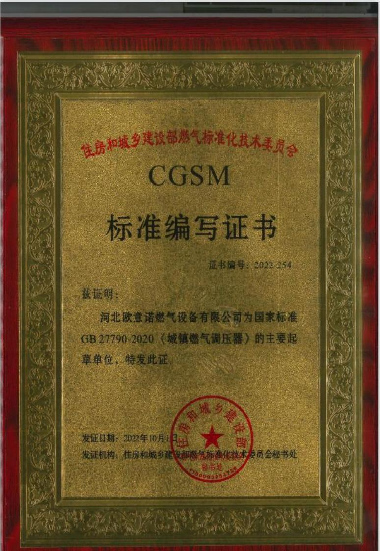
Oct . 21, 2024 20:04
Back to list
Managing Pressure Regulation in Systematic Processes for Enhanced Performance
Understanding Pressure Regulation Systems A Comprehensive Overview
Pressure regulation is a critical aspect in various industries and applications, from household plumbing to complex industrial processes. Pressure regulation systems play a vital role in maintaining safe and efficient operations by controlling and stabilizing the pressure of gases and liquids. This article delves into the concept of pressure regulation, its mechanisms, applications, and the technology involved.
What is Pressure Regulation?
At its core, pressure regulation refers to the process of controlling the pressure of a fluid (gas or liquid) within a system to desired levels. This is achieved through the use of pressure regulators, which are devices designed to automatically maintain a consistent outlet pressure regardless of changes in inlet pressure or downstream demand.
Pressure regulation is essential for safety and optimal performance. Excessive pressure can cause mechanical failure in equipment, leaks, or even catastrophic explosions. Conversely, insufficient pressure can lead to underperformance in various applications, such as heating systems, pneumatic tools, and medical equipment.
Mechanisms of Pressure Regulation
Pressure regulators can be classified into several types based on their mechanisms and design
1. Diaphragm Regulators These are among the most common types, utilizing a flexible diaphragm that moves in response to changes in pressure. As the pressure increases, the diaphragm flexes, reducing the flow of the fluid and thus regulating the pressure.
2. Piston Regulators These operate similarly to diaphragm regulators but use a piston instead. They tend to provide higher accuracy and can handle larger flow rates, making them suitable for industrial applications.
3. Electronic Regulators With the advancement of technology, electronic pressure regulators have emerged. These devices employ sensors and control systems to monitor and adjust pressure more precisely, allowing for automated and remote operations.
.
Applications of Pressure Regulation
مزلقة تنظيم الضغط

The applications of pressure regulation systems are vast and varied, including
- Natural Gas Distribution Pressure regulators ensure that gas is delivered to homes and businesses at safe, usable levels, adapting to fluctuations in demand and supply.
- Water Supply Systems In municipal water supply systems, pressure regulators help maintain consistent water pressure to consumers, preventing potential damage to plumbing.
- Industrial Processes Many manufacturing processes rely on precise pressure control. For instance, the chemical industry uses pressure regulators to maintain the desired pressure for reactions, ensuring safety and efficiency.
- Medical Equipment In healthcare applications, pressure regulation is crucial for anesthesia, respiratory therapy, and other medical devices to ensure patient safety.
- HVAC Systems In heating, ventilation, and air conditioning systems, pressure regulation ensures optimal airflow and temperature control.
Importance of Regular Maintenance
Like any mechanical system, pressure regulation devices require regular maintenance to ensure their efficiency and reliability. Over time, components can become worn or deposits can accumulate, affecting performance. Regular inspection and servicing help to identify potential issues before they lead to system failures.
Additionally, adhering to manufacturer guidelines and industry standards is essential for ensuring that pressure regulation systems operate safely and efficiently.
Conclusion
Pressure regulation systems are indispensable components of modern infrastructure, playing a crucial role in ensuring the safety, efficiency, and effectiveness of numerous applications. From household plumbing to complex industrial processes, maintaining proper pressure levels is essential for preserving equipment integrity and ensuring optimal performance. As technology advances, the mechanisms and controls for pressure regulation continue to evolve, offering enhanced reliability and precision that meet the demands of an ever-changing world. Understanding the importance of these systems and the principles behind their operation is vital for anyone involved in fields where pressure management is critical.
Next:
Latest news
-
Safety Valve Spring-Loaded Design Overpressure ProtectionNewsJul.25,2025
-
Precision Voltage Regulator AC5 Accuracy Grade PerformanceNewsJul.25,2025
-
Natural Gas Pressure Regulating Skid Industrial Pipeline ApplicationsNewsJul.25,2025
-
Natural Gas Filter Stainless Steel Mesh Element DesignNewsJul.25,2025
-
Gas Pressure Regulator Valve Direct-Acting Spring-Loaded DesignNewsJul.25,2025
-
Decompression Equipment Multi-Stage Heat Exchange System DesignNewsJul.25,2025

